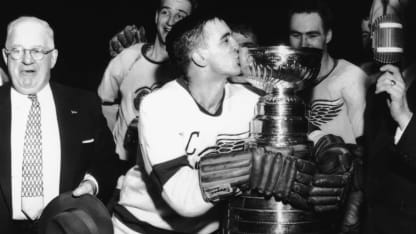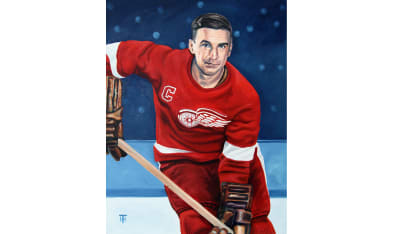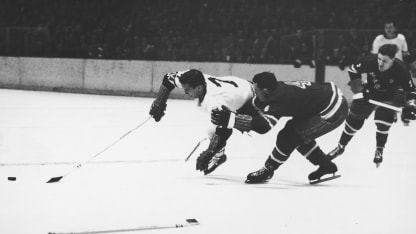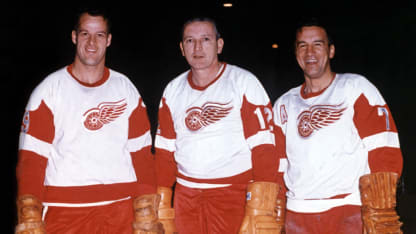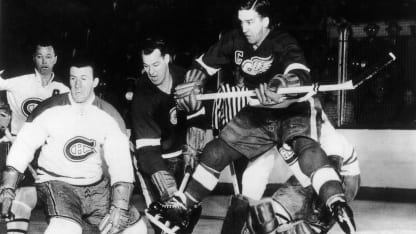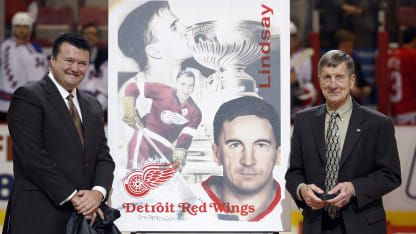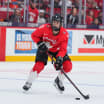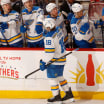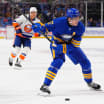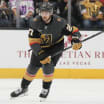You try to imagine Lindsay as a goaltender and of course, you can't. But then, the possibility might have existed in his youth. Bert Lindsay had been a goalie, in the pre-NHL days in the National Hockey Association and Pacific Coast Hockey Association, and in the NHL, playing two seasons for the Montreal Wanderers and Toronto Arenas.
"No, no," Ted Lindsay said with a laugh about putting on goalie pads. "I loved handling the puck. I loved hitting people. And I loved intimidating people, also."
Lindsay played his junior hockey at St. Michael's in Toronto, paying his own way and combining the game with his college schooling, and won a Memorial Cup championship in 1944 with Oshawa. The Maple Leafs had caught wind of this promising young forward, but when Toronto brass attended a game, not knowing his name, they scouted the wrong player; Lindsay was in the hospital for treatment of a calf that had been punctured in a game.
It was Red Wings chief scout Carson Cooper who later dangled the NHL bait, not even certain whether Lindsay was on Toronto's negotiation list. He wasn't, and fate brought him to the Red Wings, a team he had grown to love -- especially Jimmy Orlando and Jack Stewart -- by listening to powerful WJR radio, which had a signal that reached Kirkland Lake from Detroit on crisp, winter nights.
With a year of junior eligibility left, Lindsay attended his first Red Wings training camp at age 19. Red Wings boss Jack Adams, who had played with Bert Lindsay years earlier, threw him into the mix right away.
"The Red Wings had four players who were working at Ford Motor Company (in Detroit) in wartime jobs," Lindsay said. "So they practiced at night, and Mr. Adams said to me, 'You're going to practice with the veterans.'"
The NHL wasn't the Grade A experience the teenager expected.
"I'm in the National Hockey League now and I'm putting on wet equipment that the guys wore in the morning," Lindsay said. "I'm putting on this wet underwear that's cold, and I thought, 'This is the NHL? Jeez, I'm going back to St. Mike's.'"
